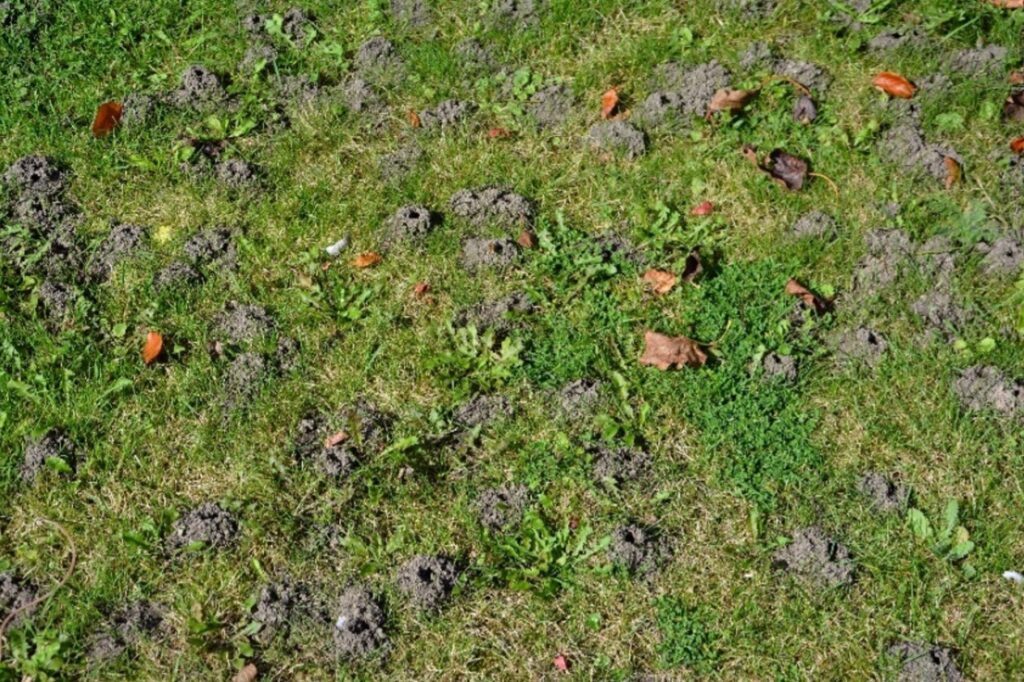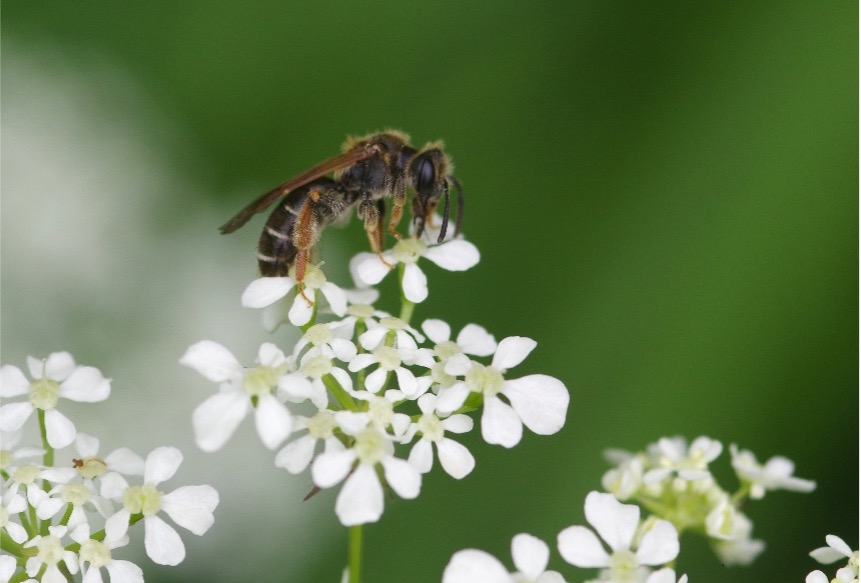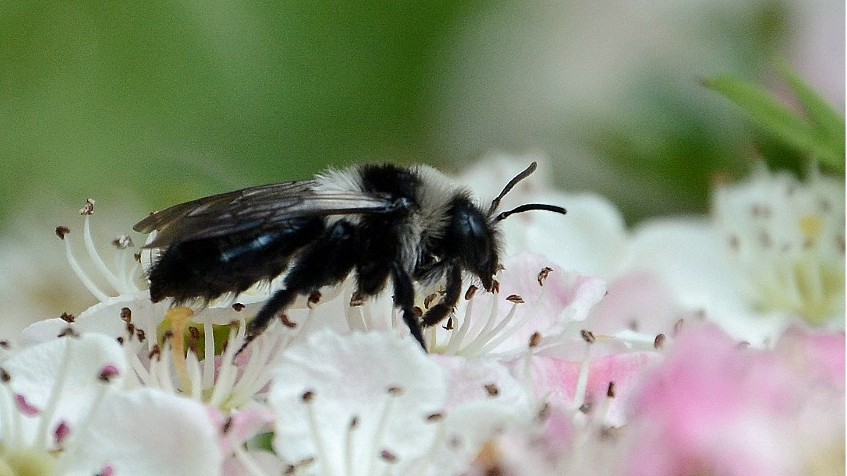By Ruby Woollard, GWCT Farmland Ecology Placement Student
What is a solitary bee?
Solitary bees are often overlooked in the world of bees, with bumblebees and honeybees being much more familiar to most people. In fact, 90% of the UK’s bee species are actually solitary bees, with around 250 solitary bee species, only 24 bumblebee species, and just one honeybee species.
As the name suggests, solitary bees mostly nest and work alone, with the female making her own individual nest where her eggs are laid and left to hatch and mature by themselves. That being said, certain species will often choose very particular locations to make their nests, and so it is not unusual to see a number of nests in close proximity. This is called an aggregation rather than a colony, as the female only tends to her own nest. A few species have evolved social behaviour similar to bumblebees, although this is not the case for the majority of solitary bee species.

Why are they important?
Solitary bees are incredibly important for pollination – an ecosystem service that contributes around £690 million to the UK economy every year. Rather than having pollen baskets (corbiculae) on their legs as social bee species do, they instead have scopae. These are an array of modified hairs on the hind leg, designed for carrying pollen. They are not as highly developed as the social bees’ pollen baskets and so solitary bees lose much more pollen as they fly, indirectly dispersing pollen to a large number of flowers, thus pollinating them.
In comparison to honeybees, solitary bees also have the ability to stay active in colder temperatures, so can be more efficient pollinators, and in some cases can pollinate plants that honeybees and bumblebees are unable to. For example, due to their larger size, honeybees and bumblebees are poor pollinators of many plants in the Apiaceae family such as carrots, parsnips, or parsley. They instead rely on smaller pollinators including many solitary bees such as mining bees (Andrena), plasterer bees (Colletes), yellow-faced bees (Hylaeus), nomad bees (Nomada) and base-banded furrow bees (Lasioglossum), along with hoverflies and beetles.

a member of the Apiaceae family © Will George
Why do we need to monitor them?
Unfortunately, many pollinators are in decline due to factors including habitat loss, climate change, and pesticide use. At a national scale, solitary bees are believed to have declined in recent decades, but not much is known about the status of many species due to a lack of coordinated monitoring programmes. Therefore, it is important that we monitor them better, to understand the factors affecting solitary bees in order to put appropriate conservation measures in place.
There is some hope that bees are adapting to these environmental changes by processes such as range shift, where a species changes its distribution to adapt to changing climate conditions, for example moving northwards or to a higher altitude as temperatures increase. However, it is not certain that they will be able to adapt at the same rate of climate change in order to mitigate its effects. Long-term nationwide monitoring schemes would allow us to see if these range shifts are occurring in solitary bee species and what effect it’s having on their populations.
The solitary bee guide
Due to there being such a wide variety of solitary bee species, they can be harder to identify than bumblebees, which may be part of the reason they have not been so widely monitored. Some species can also be easily mistaken for wasps, hoverflies or honeybees. Therefore, BEESPOKE has created a handy identification guide for solitary bees of the United Kingdom, which includes high quality photos of 34 more commonly seen species, along with descriptions of many others.
Many solitary bee species can be seen foraging from early spring, with male hairy footed flower bees (Anthophora plumipes) being seen as early as February and the females following two to three weeks later. Some of the more common species you might be likely to stumble across include the red mason bee, patchwork leafcutter bee (both of which may inhabit a bee hotel in your garden – see how you can make your own here), and the ashy mining bee, which gets its name from its distinctive ash-grey bands on its thorax. Information about when each species is likely to be seen as well as their distribution and identification features can be found in the guide.

What you can do with your sightings
Any observations can easily be uploaded with photographs to online databases such as iNaturalist, which can then be verified by an expert, or you can submit your records directly to BWARS (Bees, Wasps & Ants Recording Society). The UK Pollinator Monitoring Scheme has also been established, which details how to carry out various pollinator surveys, which typically take place between April and September. The guide will also be used for our very own pollinator surveys as part of the BEESPOKE project.
The BEESPOKE solitary bees of the United Kingdom guide along with many other BEESPOKE leaflets and guides are free to download here. Feel free to tag us in your photos on Facebook @BeespokeNSR or @gamewildlifeconservationtrust, we would love to see what you find!
